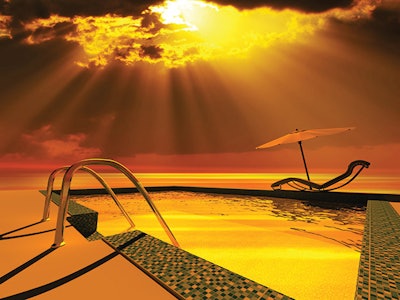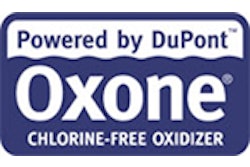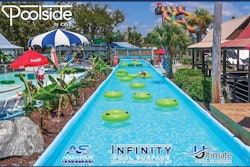
It’s been around for more than 20 years: The Energy Star program was first established in 1992 by the U.S. Environmental Protection Agency under the authority of the Clean Air Act. In those two decades, the program has certified products in more than 65 different categories, with more than 4.5 billion sold, but it wasn’t until the spring of this year that the Energy Star designation showed up on pumps from the pool industry.
Approximately one quarter of them now carry the Energy Star label.
Reaching this point has not been easy.
STRONG INCENTIVES
According to industry members involved in the certification effort, bringing the pool industry into the Energy Star fold required a collective campaign and years of steady interface with the EPA officials. Now with a bevy of certifications in place, pump manufacturers are optimistic that builders, retailers and especially service technicians will be able to use the program to drive client-purchasing decisions.
“I believe the industry should fully embrace the Energy Star program,” says Steve Gutai. Director of Trade Marketing for Zodiac Pool Systems Inc.. “There are a number of good reasons. One is, other than pool cleaners, there’s not a high level of consumer brand recognition for swimming pool equipment. There’s even less when it comes to products associated with cost savings.
“Now with Energy Star,” he says, “we have a brand that is well established with homeowners, a large percentage of whom have become accustomed to buying products with this familiar label — and the brand is associated with saving money on your power bill. In my opinion, the industry should seize the opportunity to forge that connection with the consumer.”
Scott Peck, product manager for pumps and above-ground equipment for Hayward Pool Products, sees benefits for all segments of the industry, especially retail and service. “Energy efficiency is certainly important for both new construction and the aftermarket, but the latter represents a tremendous opportunity to the industry to upgrade homeowners’ equipment and reduce their energy costs year after year.”
Manufacturer enthusiasm for the program is bolstered by EPA statistics regarding consumer attitudes and preferences. According to the agency, 81 percent of consumers look for products that are good for the environment; 98 percent believe it’s important to save energy in the home; and 92 percent believe the Energy Star label means products bearing the certification use energy more efficiently than comparable products.
Supporting those claims, the latest Good Housekeeping internal reader audit shows Energy Star is now tied at 92 percent with Good Housekeeping in terms of brand influence.
More specific to the pool and spa industry, consumer demand for pool pump technology with the Energy Star label is now being supported in many regions by rebates offered by utility companies for products that meet energy-efficient standards. In most, if not all, cases those standards are the same as the criteria used by the EPA for Energy Star certification.
“In 2007 we had 10 rebate programs nationally. That’s up to about 55 currently and the number is growing,” says Jeff Farlow, program manager of energy initiatives for Pentair Aquatic Systems. “Being Energy Star certified makes it easy now for utility companies to go the list and identify the products that should be eligible for rebates, the work’s already been done verifying which products meet the criteria.”
Currently more than 700 utility companies promote the use of Energy Star certified products.
Although use of Energy Star labeled products is strictly voluntary, in some states, such as California, replacement pumps must meet energy efficiency regulations under the state’s Title 20, which also largely comports with Energy Star criteria.
“I believe it’s a compelling message,” Farlow adds. “It’s certainly one of the best consumer-oriented messages we’ve had in a long time. It’s one way of showing that our products really do save energy.”
A LONG ROAD
The positive feelings and sales potential generated by pool pump technology receiving certification came after years of the EPA keeping the pool industry at arm’s length.
“For a long time, swimming pools were pretty far down the list of product categories identified by the EPA for certification,” recalls Farlow, who for years made it a personal priority to continuously prod government officials to place a higher priority on swimming pools. “One of the challenges we always had was that the program has 10 guiding principles used in qualifying product categories for certification. Pool pumps didn’t make the cut on all ten.”
A major sticking point was the EPA viewed pools and spas as primarily products for the Sunbelt, while the program inclines toward products that are national in scope. The EPA also wanted the products to show immediate, consistent savings, which are difficult to calculate on average because, as Farlow says, “pools are like snowflakes, every one is different. Depending on a wide range of factors, the savings can vary dramatically.”
Yet another guiding principle that initially blocked EPA consideration was the agency’s preference for products that are available from multiple sources. When Farlow and others began advocating the industry’s products for certification back in 2005, only Pentair had come to market with a line of variable-speed pumps. Fortunately, Pentair was joined by companies such as Hayward and Zodiac-Jandy with their own energy-efficient product lines, which strengthened the industry’s overall position with the EPA.

Certified Brands
Just how many swimming pool pumps are certified to carry the ENERGY STAR label?
For the purpose of this article, Jeff Farlow of Pentair ran through the program’s current listings. After removing the duplicate entries, he counted 67 certified pumps.
The list includes nine brand names from six different manufacturers including:
Jandy (mfg by Zodiac) Pentair Sta-Rite (mfg by Pentair) Shasta (mfg by Pentair) Hayward Speck Raypak (mfg by Speck) EcoPump (mfg by SpectraLight Technologies) Waterway
“It came to a point,” recalls Farlow, “where the EPA realized that they needed to step back from some of those requirements if they were going to keep expanding the program and certifying new product categories.”
The pool industry’s campaign to gain pump certification received a huge boost in 2008 when the National Resources Defense Council published results of a study examining the potential energy savings in swimming pools compared to houses, Synergies in Swimming Pool Efficiencies. In the report, NRDC noted that each year U.S. swimming pools consume somewhere between $1.1 and $1.6 billion worth of energy, a rate of consumption that its research showed could be “offset” by the use of energy efficient components and efficient hydraulic design.
The study broke down the results into five large sample regions. In each case, pools were shown to represent potential savings similar to that of an Energy Star qualifying home. In the Los Angeles area where a majority of pools are used nearly year round, the potential savings identified by the NRDC were greater than the home.
ACCEPTING CRITERIA
As a result of the NRDC report, in addition to the on-going lobbying efforts of the industry, the EPA began to turn its attention to pools and the potential savings represented by energy efficient pump technology. Unfortunately, in 2010, right at the point when pool pumps were queued up as the next product category slated for possible certification, the process came to sudden halt.
Although not widely publicized at the time, the program suffered a major black eye when it was discovered that some of the products bearing the label did not actually exist, which led to Congressional action demanding that EPA bring its house in order, or face possible defunding of the Energy Star program.
The dust-up delayed the certification process for pool pumps for two years. During that time, the EPA revamped the program, requiring third-party laboratory testing and verification as opposed to manufacturer supplied data, with the data assessment and verification process now falling to the Department of Energy.
“That was a frustrating time,” recalls Farlow. “But ultimately, when they came back on line with the program, it had more checks and balances, and from what I can tell, it was an improved program because of the independent testing and verification that’s now required.”
In 2012, when Energy Star restarted the certification process, the industry was primed with numerous products ready for independent laboratory testing and existing resources in place that pointed to a workable standard. And in February of this year, Energy Star’s testing and certification became based on an energy factor (EF) of 3.8 gallons pumped for every Watt-hour consumed. Any pump with an EF equal to or greater than 3.8 is approved.
One of the big implications of the 3.8 performance criteria, explains Farlow, is that “it’s not prescriptive, like Title 20. There’s nothing prohibiting a manufacturer from certifying a single-speed pump, so long as it meets the 3.8 energy factor. It just so happens that 3.8 number is right at the threshold of efficiency you find in multi-speed and variable-speed pumps.”
USING THE LABEL
With the criteria and testing protocols in place, the testing, verification and certification process has moved forward at a rapid clip, with numerous products now carrying the label. (See the side bar for a current list.) Manufacturers, APSP and other industry entities are firmly committed to supporting use of the Energy Star program through a variety of avenues, including continued advocacy and work with utility companies to establish rebate programs, online resources, seminars focused on proper application and hydraulic design, articles in trade publications explaining and promoting the program, among others.
“The industry has tools such as energy calculators to help educate homeowners on energy costs,” says Pecks. “Energy Star further allows homeowners to recognize that they now have added choices with respect to energy efficiency when selecting a pool pump.”
Comments or thoughts on this article? Please e-mail [email protected].












































